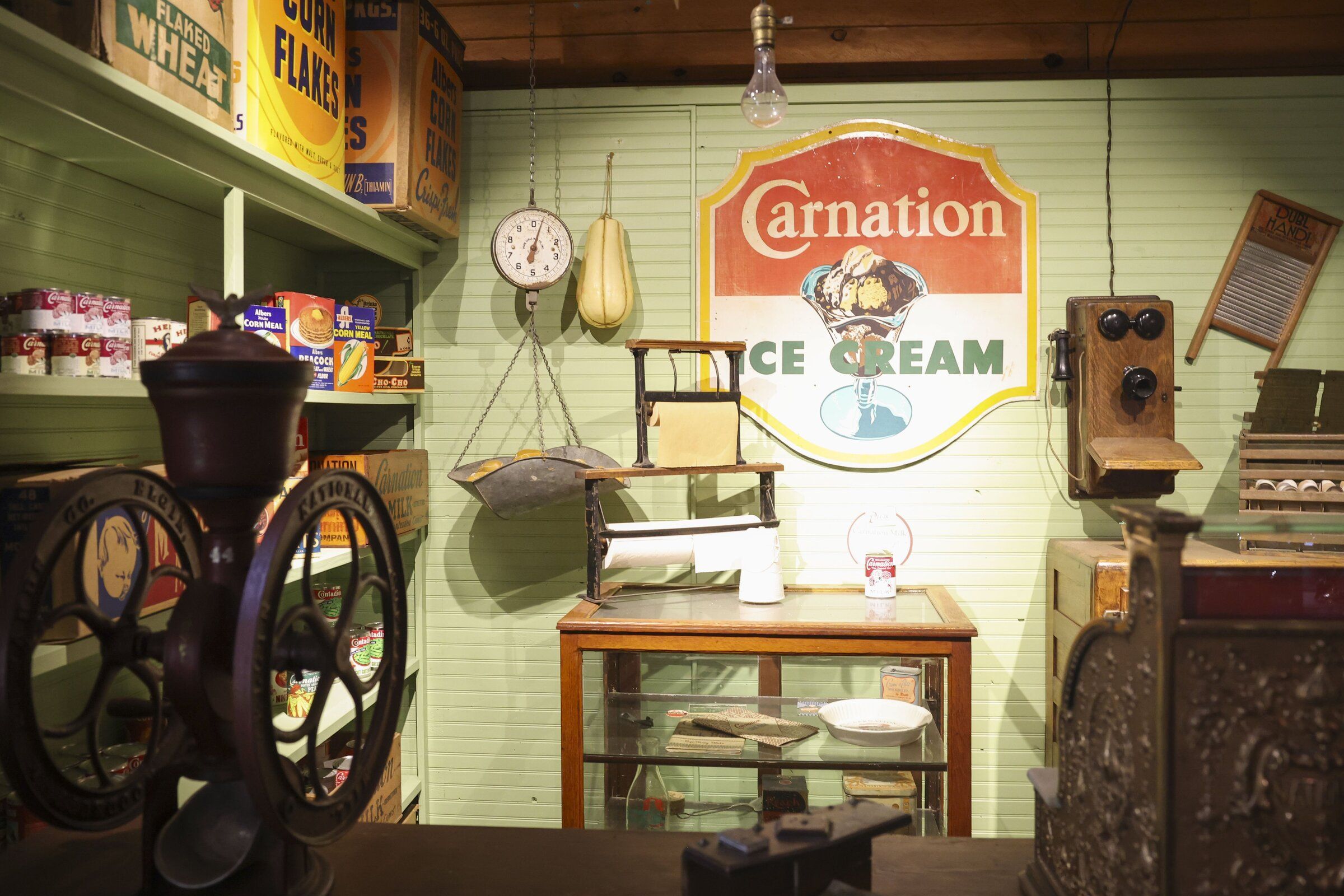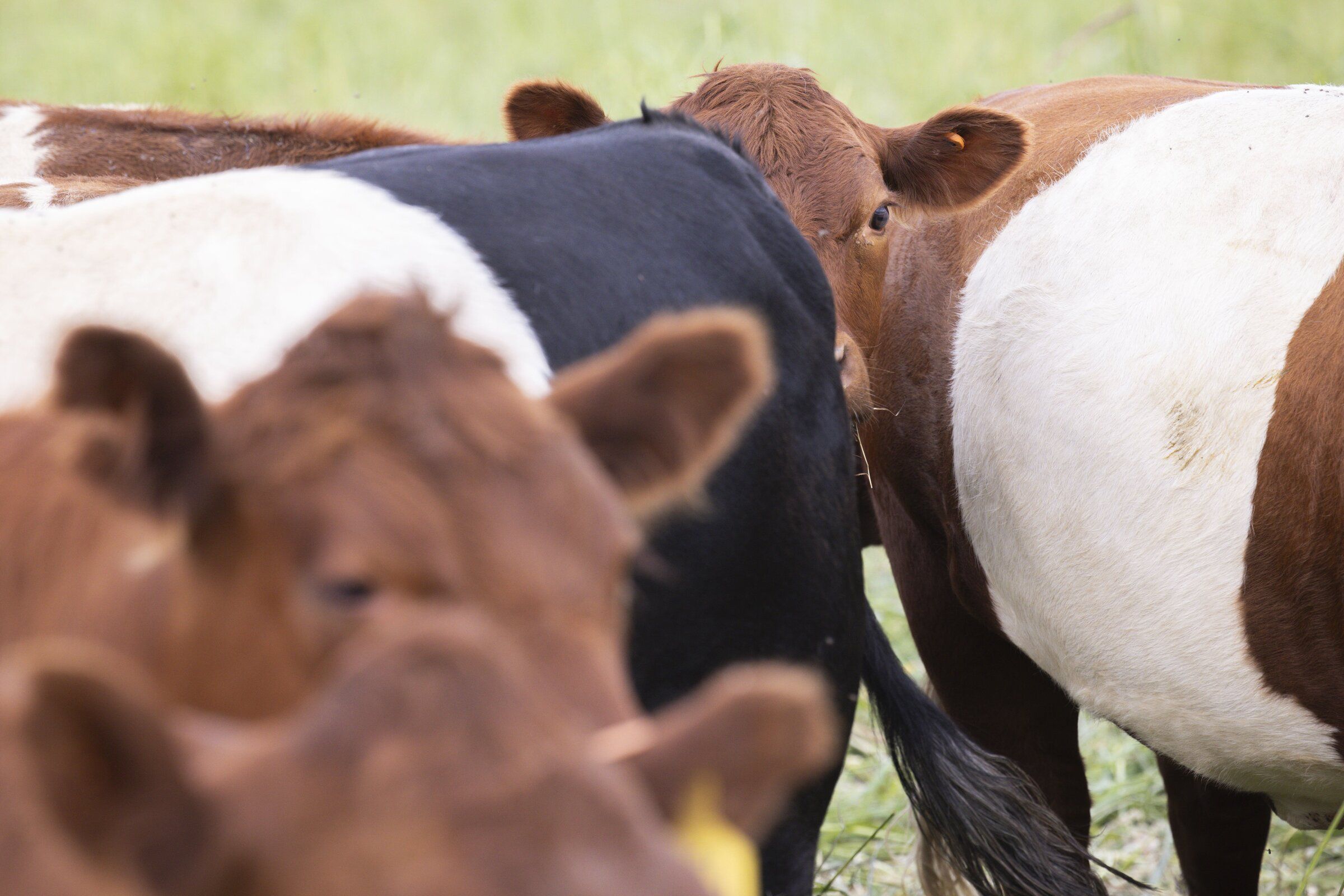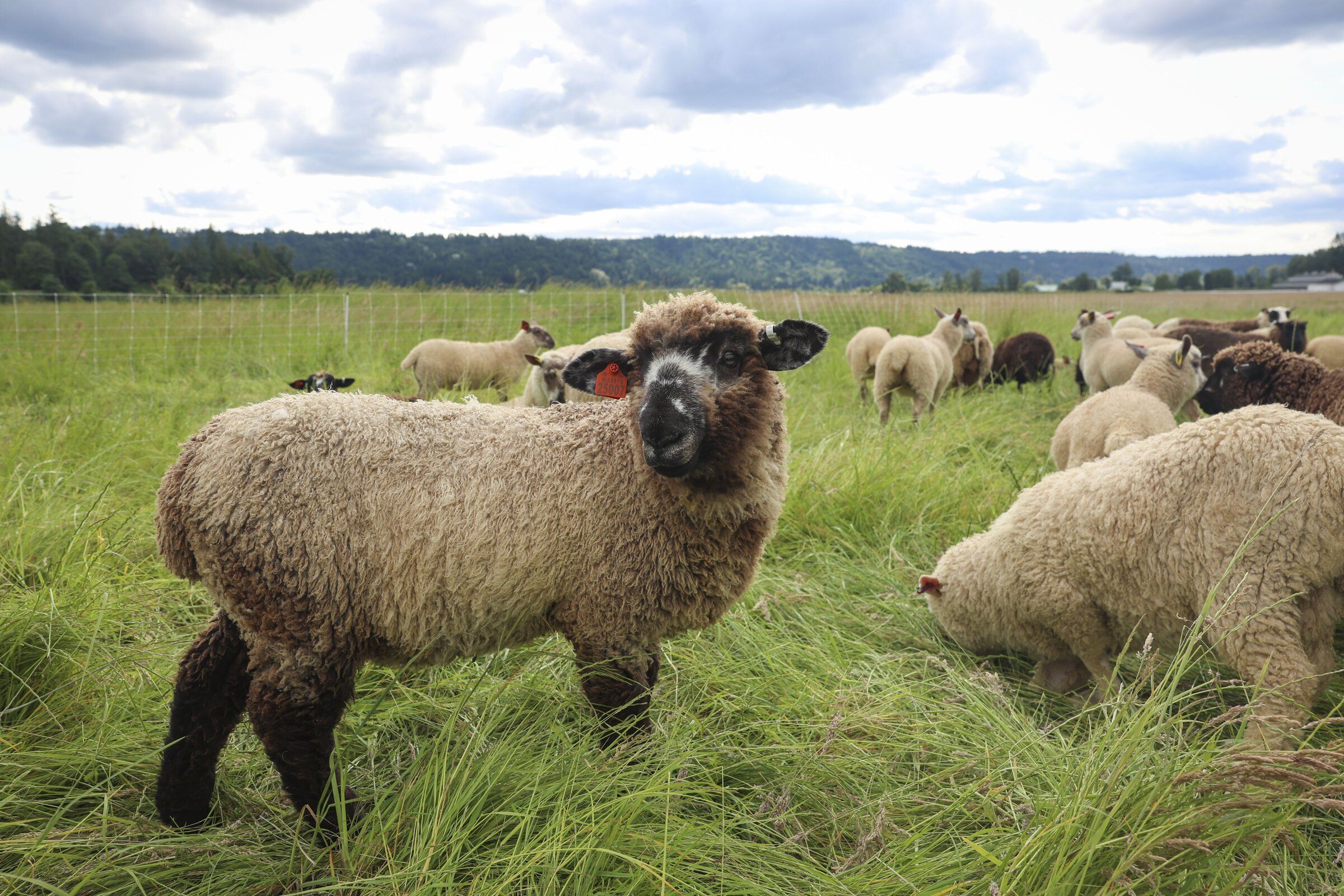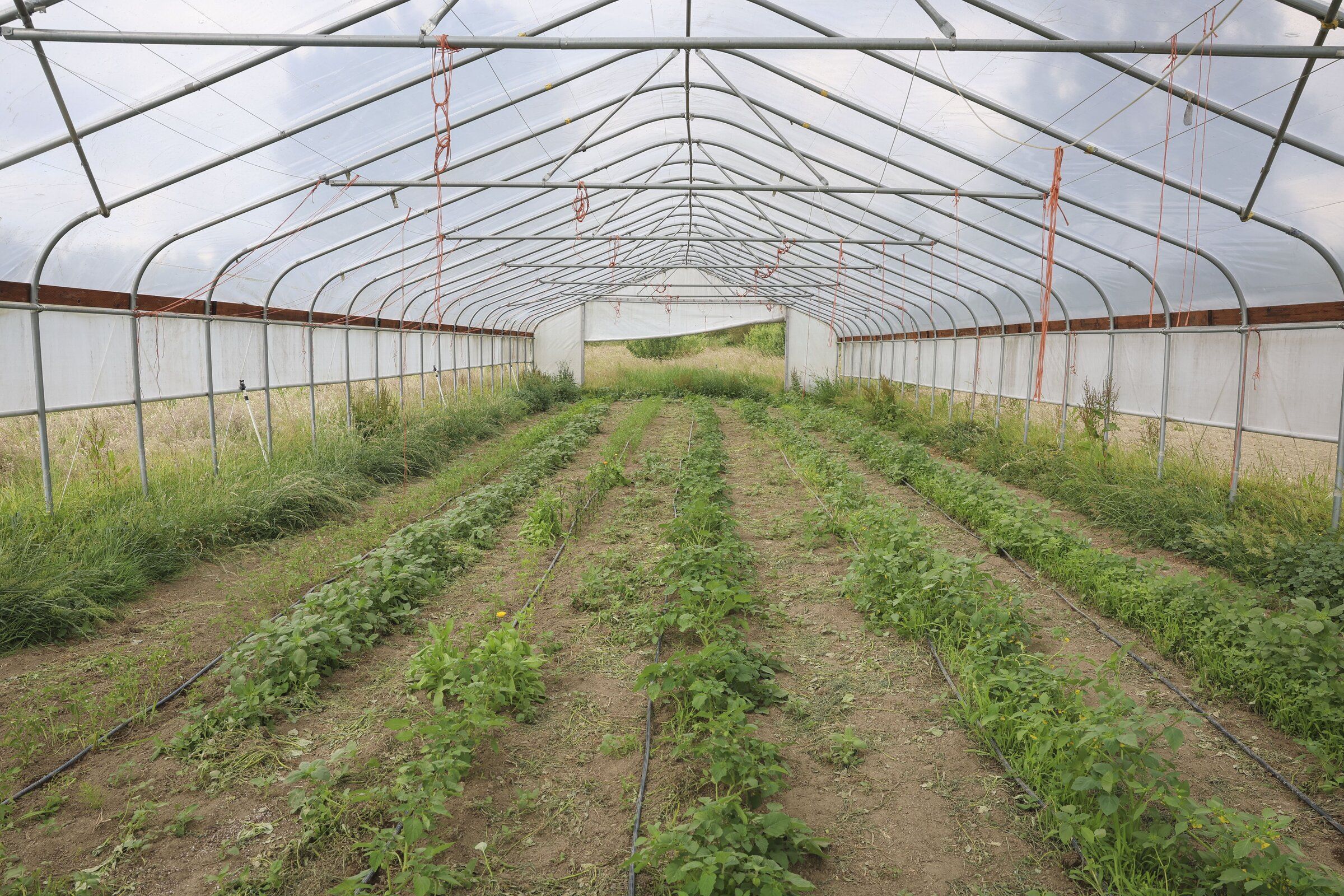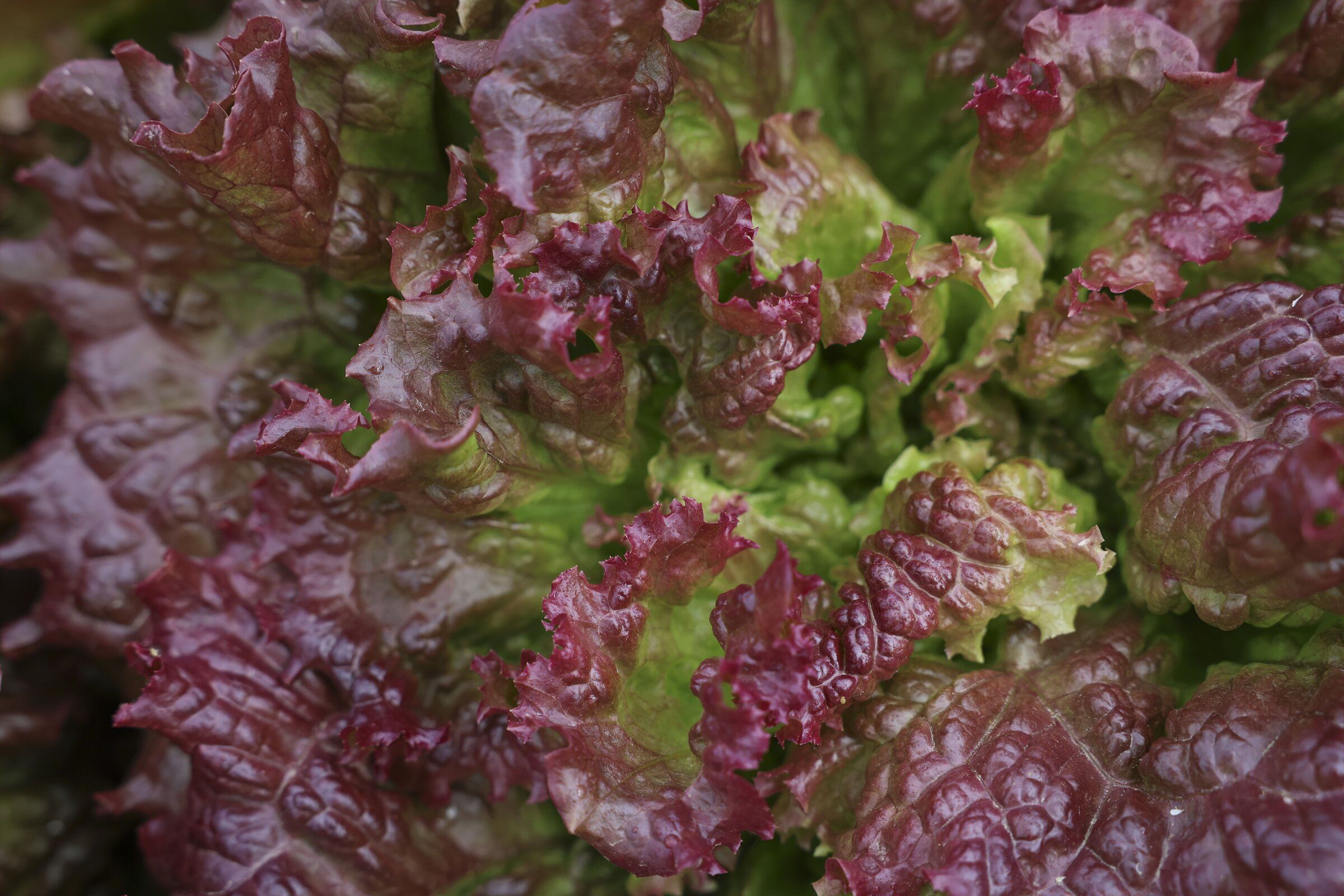IN THE LUSH pastures of Carnation Farms, near the farmstand selling local foods and the statue of a famous cow, prizewinning animals graze with benign expressions that some might call contentment.
A century ago, after all, the farm’s celebrated slogan was “Home of Contented Cows.” Cows were more famous then. So was Carnation.
Originally founded by E.A. Stuart in 1908 to supply his evaporated milk business — a game-changing, shelf-stable food before refrigerators were common — Carnation sprawled into a global enterprise whose reach is almost impossible to grasp today.
Carnation’s red-and-white labeled cans of evaporated milk were as recognizable and as common as Campbell’s soup. Within 10 years of the farm’s founding, the nearby city of Tolt changed its name to Carnation.
The 818-acre Eastside farm once welcomed tens of thousands of annual sightseers, with scientists and other staff notching a bewildering array of wins, from improving the global genetics of Holstein cows to inventing Friskies dog and cat kibble to raising prizewinning fuchsias, show horses and Scottish terriers.
Now, after a decades-long hiatus, the property is again a beacon for big ideas.
“It was always an innovative place,” says fifth-generation family member Daniel Oderyd, who is married to Sarah Stuart Oderyd, the great-great granddaughter of E.A. Stuart. But the innovation in Carnation’s heyday used technological advances to help foods last longer and travel farther. The new Carnation Farms, now a nonprofit, takes a different direction: Making fresh foods more local and renewable.
The new mission as a “hub for regenerative agriculture” involves building up community as well as soil, farming to improve the local ecosystem — and teaching other leaders to do the same.
The concept is harder to package than a can of milk, but even more vital.
THE FARM’S REMARKABLE history starts with a remarkable founder: E.A. Stuart (1856-1944), the 12th of 13 children born to a North Carolina family.
Ever-perseverant, Stuart was a “God-fearing Quaker (who) believed in community, believed in family, and hired like-minded people,” as farm historian Elbridge “Bridge” Stuart III, his great-grandson, said recently. E.A. Stuart’s impact was lasting, and far-reaching. He American spirit was even was memorialized in the 1969 John Stewart folk song “Mother Country,” which Buzz Aldrin chose to put on the mixtape made for the Apollo 11 astronauts. After Neil Armstrong and Aldrin became the first people to walk on the moon, the song played as the spaceflight returned from the moon to Earth.
A poem hung in Stuart’s office vowed “Pluck wins,” and he needed that promise in his early career, selling produce with his brother in Indiana until rheumatism sent him West, running a grocery store in El Paso, Texas, partnering in a wholesale grocery business in Los Angeles.
The son of a farmer, living in an era of “homicidal carelessness in the handling of milk,” as a 1974 book about the farm’s history put it, Stuart had a lightbulb moment when he first saw the sanitary, shelf-stable properties of evaporated milk. In 1899, at age 43, he brought his family to the Northwest to take over a bankrupt condensed milk manufacturing plant in Kent.
He had no idea how to manufacture the product, relying on a temperamental Swiss inventor, John Meyenberg, to handle the logistics before later paying him to share his secrets. The Carnation name came from a cigar box that Stuart saw in a grocery store on First Avenue in Seattle sporting the flower. He thought that was a ridiculous way to hawk tobacco but perfect for representing his pure products. A stickler for high standards, Stuart even shipped his cans to Yokohama, Japan, and back to prove to himself the quality would hold up over time.
The Gold Rush benefited Stuart as much as any miner who struck it rich. Crews stopped in Seattle for provisions, and canned evaporated milk was the only option that wouldn’t spoil on the way to Alaska. The globs of butter that formed at the top — which Stuart considered a quality flaw to repair — proved to the miners they were getting rich and real dairy.
Stuart knew he’d need more milk from more and better cows to support his “supreme faith” in his product. He bought purebred Holstein bulls, leasing them to area farmers who supplied his business. Childhood friend Sam Hill, a Northwest railroad pioneer, then tipped him that a railway spur would come to the Snoqualmie Valley, turning it from virtual wilderness to a place Stuart could house his own breeding stock.
Friends found the Carnation property for him — a rough and flood-prone land of stumps and swamps. Stuart went to work, adding buildings and adjoining parcels on higher land better suited to dairy cows. He built a bridge and had a concrete road poured in 1921 — probably the first paved road in East King County, says Bob Kosters, a longtime Carnation employee and now the farm’s archivist.
Improving the herd genetics was key. Stuart bought top Holsteins, bred them thoughtfully and treated his “contented cows” well. One sign in the stable explicitly forbade cursing around the animals, another required “patience and kindness.”
Stuart’s quality quest became legendary when he visited Chicago in 1918 for the auction of a promising bull calf, “King Sylvia.” His winning bid was $106,000 — the equivalent of $2.4 million today. The astonishing sale was front-page news and helped cement Carnation’s name as “probably the greatest dairy farm in the world,” Kosters says.
CARNATION COWS AND blood lines went around the world — praised, known by name, applauded for their record-setting tons of butter and milk. Drawers of index cards and shelves of binders still in the farm archives show decades of Carnation breeding records, studied even now for insights into cattle genetics.
If King Sylvia brought Carnation notoriety (his death earned an obituary in The Seattle Times), Segis Pietertje Prospect, aka “Possum Sweetheart,” tugged heartstrings. The cow set a world record for milk production, and when she died, her milker, Carl Gockerell, wrote his boss that “the greatest, most beautiful and nearest human cow that ever lived” had breathed her last, with her head resting in his arms. Three years later, the state governor and the mayor of Seattle both came to the unveiling of a statue in her honor.
Fame and acclaim seemed to come from every acre, from the prizewinning horses shown in the gorgeous wooden hippodrome erected in 1922 to the plantings that drew garden clubs from around the region, to inventions like Carnation Instant Breakfast. The company sponsored a longstanding national radio variety program, “The Contented Hour.” Even when Carnation’s corporate headquarters moved in 1949 to California — where E.A. Stuart had lived part-time for many years and once gave a young Shirley Temple a pony — the original Carnation remained a working farm, a major employer and a bucolic place for visitors to get a scoop of Carnation Ice Cream and see the contented cows.
The company diversified widely, with acquisitions like the Albers Brothers Milling Company in 1929, expanding its reach to cereals and animal feed. New kennels replaced “canine shanties” that were not up to Carnation standards, and purebred Great Danes, golden retrievers and Scottish terriers replaced strays. The animals ate carefully designed and weighed rations that led to Friskies, the first known dry dog food (followed by dry cat food tested on the felines in a separate cattery). Carnation hired a legendary dog handler, Bob Bartos, to run the research kennels, and the champions who came out of his program filled a trophy room with honors, including those of Bardene Bingo, a Best in Show awardee at the Westminster Dog Show. (The dog was “the best we’ve had in years,” a judge told The New York Times after his 1967 triumph.)
That empire came to an end in 1985. Nestle paid $3 billion ($9 billion in today’s dollars), with the Carnation property an incidental detail. The idyllic spot became a Nestle research center. In 2007 it got a new life as Camp Korey, one of the “Hole in the Wall” camps founded by actor Paul Newman for children with serious illnesses.
When the camp moved in 2016, a small Stuart family foundation reclaimed the Carnation property — red-roofed buildings deteriorated but still intact.
The modern Carnation, the largest parcel of farmland remaining in an increasingly urbanized King County, had to be something bigger than a museum or wedding and events space or even a working farm (though it contains all of those).
The family’s decision to focus on regenerative agriculture, in a way, is a soil-based version of its original goals. It uses the land for practical purposes, but also as a demonstration and training ground on today’s best practices and innovations for the future.
Daniel Oderyd’s background included both the culinary and agricultural worlds, and he felt Carnation could help fill a missing link between them. “I always felt the disconnect … the industries are so dependent on each other and yet they haven’t really communicated.”
LAST YEAR, WHEN drivers turned a bend in the main road past Carnation Farms, grazing cattle were visible in the lower pastures for the first time in decades.
They aren’t the famous milkers of Stuart’s day, once called the world’s largest herd of Holsteins. The modern animals are beef cattle — specifically, the world’s largest herd of Belted Kingshire cows. (It doesn’t take much for the honor, the herd numbers about 30.) The miniature cattle marked with a distinctive white stripe were developed to thrive in King County’s pastures and climate. Carnation sells grass-fed beef shares to the public and individual cuts at its farmstand, as well as using the meat in its culinary program.
Like the old-style farm, the nonprofit is about much more than cows. Flocks of sheep — sweet as dogs on one pasture visit — are prized for both meat and wool. If not as famous as King Sylvia and Possum Sweetheart, they possess their own names and patient caretakers and show ribbons — “Pepa” recently won Best in Show at a local fleece judging. The grounds, including forest and pasture as well as about 15 acres of crops, still feature gorgeous plantings like a Japanese garden gifted by two Japanese students who trained there for a year in the late 1960s.
The land has been a haven for programs like the James Beard Foundation’s Chef Bootcamp for Policy and Change, where chefs gather in the fresh air to focus on making a difference. A beautifully remodeled dining center is used for farm dinners and cooking classes. Farmers and chefs and community members visit to learn about grazing and butchery and beekeeping, about pizza- and pie-baking, to sit down for a farmstand dinner or shop for ingredients to prepare their own.
DECLARING A HUB for regenerative agriculture is one thing, defining it in practice is something else.
That growing term still lacks an ironclad definition, but it has some well-accepted practices aimed at preserving soil and ecosystems, including planting cover crops, giving pastures years off to rest after harvest and integrating livestock into the farm. Its ethos builds on certified organic farming, which is regulated by the U.S. Department of Agriculture, limiting synthetic fertilizers and pesticides, among other requirements.
The cattle’s brief rotation in Carnation’s lower pastures, for instance, is significant partly because moving cattle between pastures is a regenerative practice, improving soil health.
As in Stuart’s day, some of the farm’s success now comes from high-powered staff. CEO Paul Shoemaker, for instance, was an early Microsoft manager and then founding president of Social Ventures Partners International, a well-known consultant on philanthropy and social impact.
He’s hired a director of regenerative agriculture, Eric Popp, and a culinary director, Kristen Schumacher. Their challenges include developing profitable ways to use the land that fit its purpose. The property, with its historic buildings, will never be entirely self-sustaining, given about $1 million in annual costs including maintenance on historic buildings and property that the average farm would not face. But it can’t serve as a working farm, let alone a demonstration farm, if the farming part of the equation isn’t financially viable and replicable.
For Popp, part of that challenge looks like focusing on anchor crops like lettuces — Romaine, butterhead, escarole — rather than growing a “cookie-cutter market garden” with a bit of everything.
“Time will tell if this is going to be repeatable long term, but in the short term, we’ve been able to cut fertilizer completely out for our lettuces,” Popp says. “They look beautiful, and that’s just because of the fertility practices that we have here on site.”
The farm is considering “value-added” steps like producing ready-to-eat washed and chopped greens, aggregating crops from neighboring farmers as well as their own fields, giving them a new outlet — shades of the old days of selling milk.
“We want it to be simple, easy, repeatable, scalable, profitable, and we don’t want to be the sole beneficiaries of the work that we’re doing here,” Popp says.
The farm’s educational program is aimed in part, according to Popp, at “teaching folks how to be successful farmers at scale,” as with a four-season course this year in rotational grazing, while classes like butchering will also help fill a niche that’s missing in this region.
At the culinary kitchen and at the farmstand, Carnation’s progress looks like peavine pesto and quarts of lamb-escarole soup, sandwiches built with Carnation roast beef, and toasted coconut granola made in Schumacher’s kitchen with oats harvested up the road at Steel Wheel Farms.
Schumacher met with Popp in October to request specific crops for the culinary program — garlic, tomatillos, herbs and so on, and had a similar conversation with the farm’s livestock team.
“We’re going to use as much as we possibly can from our own farm, and that’s the mindset we’re going to have when we’re developing products,” Schumacher says. The farm’s June dinner, one of many public events hosted by the farm, was to the first time Carnation’s own lamb and beef were served together to guests.
Schumacher came to Carnation after some 20 years of professional cooking, including as lead chef at The Pantry, a cooking school in Ballard, and as owner of her own Heirloom Cookshop in Snoqualmie. She developed some of her farm-to-table ethos at the influential Quillisascut Farm School in Eastern Washington.
“I’ve always been drawn back to the farm,” she says. “I love it out here. I think it’s special.”
The current crew at Carnation Farms has come far, she says, but are still “feeling it out.”
Carnation Farms considers itself a community-based hub for regenerative food and agriculture. Does community hub mean educational workshops? Introducing people to a flavor they’ve never tasted before, like lean grass-fed lamb? Is it a grazing workshop, a pop-up for the community highlighting housemade pastrami?
Already, Stuart and Oderyd say the farm’s work has surpassed goals that onlookers said were impossible when the family decided to make a Carnation Farms for the modern era.
“Food should taste good and should be good for the planet,” Oderyd says. “That matters for all of us.”
At its core, that mission doesn’t sound at all canned.

